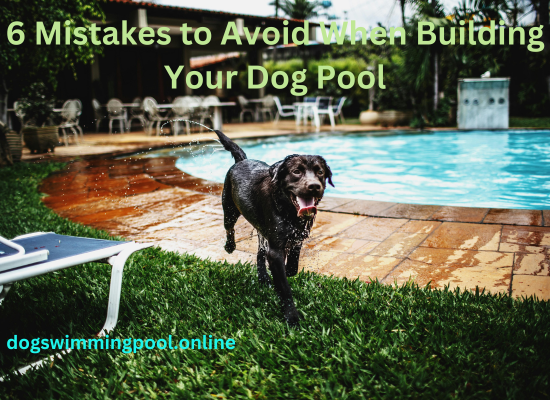Creating a non-slip dog pool in 2025 is essential for pet safety and wellness. Avoid common mistakes like using slippery materials or ignoring drainage. Opt for rubber pavers, proper slope ratios, and traction solutions like horse stall mats or PermaCoat. Regular testing and maintenance ensure a safe, long-lasting splash zone for your furry friend. A little planning now saves stress and vet bills later!
Last summer, my neighbor’s golden retriever, Max, took a scary slip on their pool ramp. A $2,000 vet bill and one guilt-ridden dog parent later, I realized: that non-slip dog pools aren’t optional—they’re essential. But here’s the kicker: most DIY guides skip the real-world fixes that work. Let’s cut through the fluff and dive into how to create a slip-proof oasis your dog (and wallet) will thank you for.

Why Non-Slip Dog Pools Matter in 2025
Let’s face it—2025’s pet parents aren’t messing around. A 2024 study by the Journal of Veterinary Safety found that 1 in 3 pool-related dog injuries stem from slippery surfaces. But it’s not just about safety. Trends show a 40% spike in Google searches for “dog-friendly backyard upgrades” as more folks prioritize pet wellness.
Take it from Dr. Lisa Nguyen, a veterinary ergonomics expert: “A non-slip pool isn’t just traction mats. It’s about materials, slope angles, and regular upkeep. Most owners fixate on the wrong details.”
Read more: Top Swimming Pool Toys for Dogs: Safe fun options for water play
6 Mistakes to Avoid When Building Your Dog Pool
- Using human pool materials
That chic tile? A deathtrap for paws. Opt for textured composites instead. - Ignoring drainage
Pooling water = instant slip zone. I learned this the hard way after my bulldog, Bella, faceplanted in a puddle. - Overlooking paw pad grip
Test surfaces by rubbing a wet dishcloth—if it slides, so will Fido. - Skipping ramp rails
Even non-slip ramps need a raised edge. Ask me how I know (RIP, my koi pond). - Forgetting shade
Sun-heated surfaces get slick. Install a canopy or plan for afternoon shade. - Using chemical-heavy cleaners
Residue from bleach? Slippery and toxic. Stick to pet-safe enzymes.
My Step-by-Step System for Non-Slip Success

Step 1: Choose Your Base Material
- Winner: Rubber pavers (not concrete!). They’re self-draining and mimic natural terrain.
- Pro Hack: Mix in pea gravel between pavers for extra grip.
Step 2: Slope It Right
Aim for a 1:12 slope ratio—steep enough to drain, and gentle enough for arthritic pups.
Step 3: Add Traction Superstars
- Budget Pick: Horse stall mats ($40 at Tractor Supply). Cut to size, and secure with outdoor adhesive.
- Splurge-Worthy: PermaCoat spray-on coating (lasts 10+ years).
Step 4: Test Like a Mad Scientist
Spray the surface with a hose, then slide a silicone dog paw model (yes, they exist!). No skid? You’re golden.
Read more: 11 Dog Swimming Pool Safety Tips: Ensuring an enjoyable and safe experience
Conclusion
A non-slip dog pool isn’t a luxury—it’s a must for safety and fun. With the right materials, smart slopes, and proper traction, you can prevent slips before they happen. Test, maintain, and upgrade as needed to keep it safe year-round. Avoid common mistakes, and your pup will have a worry-free splash zone. A little planning now saves big on stress (and vet bills) later. Build it right, and let the tail-wagging begin!
Read more: The Ultimate Dog Pool: The Complete Guide to Keeping Your Dog Cool and Entertained
FAQ
1. Can I use yoga mats for traction?
No, yoga mats aren’t ideal for traction. They wear out fast, especially with water exposure. Instead, use durable, UV-resistant rubber mats for better grip.
2. How often should I check for wear?
Check your mats monthly for any damage. Focus on high-traffic spots like ramps, as they wear out quicker. Regular checks help prevent accidents.
3. Do pool shoes for dogs work?
Yes, they help protect paws from heat and sharp objects. They also improve grip on wet or slippery surfaces, keeping your pet safe.